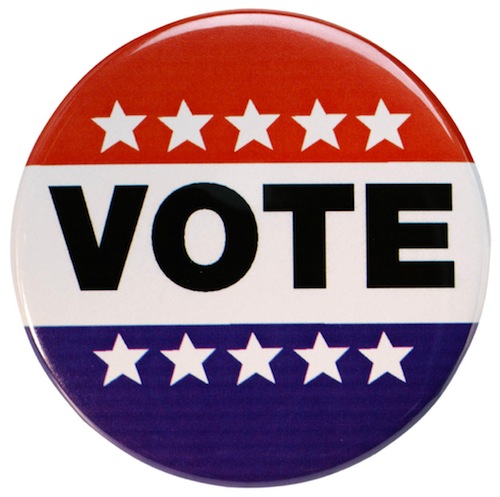We don’t have a long primary season in Texas – the filing deadline was barely two months ago, though to be sure some candidates have been running for much longer than that – and the first part of it is drawing to a close, as early voting officially begins today. For those of you in Harris County, you can find the schedule and locations here. Please be aware that there are new locations, and some old locations are no longer in use. For example, if you live in the Heights area, the SPJST Lodge location is not being used any more, but Resurrection Metropolitan Community Church (Room 106) at 2025 West 11th Street is available. You can find a map and get directions to any location here. There are 52 early voting locations in the county, every one open from 7 AM to 7 PM each day except this Sunday (1 to 6 PM as usual for Sundays) through next Friday, the 28th. You have plenty of time, so be sure to go vote.
For other counties:
Fort Bend
Montgomery
Brazoria
Galveston
Waller
This Chron story has the basic facts about voting – if you’ve done this before it’s nothing new, but if you know a newbie, it would help them.
Also new, here in Harris County: Virtual translators.
Harris County residents who primarily speak Spanish, Chinese, Vietnamese or 26 other languages now will have access to a virtual translator at the polls, County Clerk Diane Trautman announced Friday, part of a series of initiatives aimed at improving the county’s voter participation rate.
In a nod to Harris County’s diversity — more than a third of its 4.7 million residents are native speakers of a language other than English — elected officials want to eliminate communication barriers at voting sites.
“With this innovative technology, interpreters can communicate with the voter and poll worker in real time via video chat to make the voting process easier and more accessible,” Trautman said.
Flanked by county Elections Director Michael Winn, Trautman offered a demonstration of the machines at the West Gray Multi-Service Center. The tablet devices, which previously stored electronic poll books and were set to be discarded, allow a poll worker to make a video conference call to a translator in the desired language. The translator then can help the poll worker and voter communicate.
[…]
Trautman said the virtual translators will be available at all 52 early voting locations for the March primary elections.
Dozens of Korean-speaking voters were frustrated when then-County Clerk Stan Stanart barred translators from operating inside a Spring Branch polling site in 2018. Stanart said he had to follow the Texas Election Code, which limits who can operate inside a 100-foot buffer zone at polling places.
Korean American Voters League President Hyunja Norman, who helped organize the Spring Branch voters, welcomed the virtual translation devices.
“I think they can be very beneficial,” she said. “Still, the human factor cannot be ignored.”
Norman said many of the Korean-American residents in Houston who need language assistance are elderly immigrants who are new to voting and often intimidated by technology. She said she still would like to see real-life translators gain more access to polling sites.
Pretty cool. And if I’m reading this correctly, the virtual translator will be working with a poll worker at the site, so there will be some human involvement. Hopefully this will help the folks who need it.
I’ve talked about turnout before, and as is my habit I will be following the daily EV reports to see how that is progressing. I have the daily EV reports from other years to serve as points of comparison: 2012, 2016, and 2018. Sadly, I don’t have a daily report from 2008 – looking back at my posts from then, I made the rookie mistake of linking to the report on the County Clerk website, which was the same generic URL each day. Alas. Here’s my blog post after the last day of early voting, and here’s the cumulative report from the Dem primary. Note that back in those early days of early voting, most people still voted on Election Day. For the 2008 Dem primary, there were 170K early in person votes (plu 9K mail ballots), and 410K total votes. That’s one reason why the subsequent predictions about November turnout were so off the charts – in November, unlike in March that year, a large majority of the vote was early, which is the norm now in even-numbered years. But because we had been used to less than half of the vote being early up to that point, we way over-estimated the November numbers. We have a better handle on things now.
So that’s the story. I’ll aim to post daily updates, which will depend to some extent on when I get the reports. When are you planning to vote?


Kudos to Trautman for accommodating voter’s language needs.